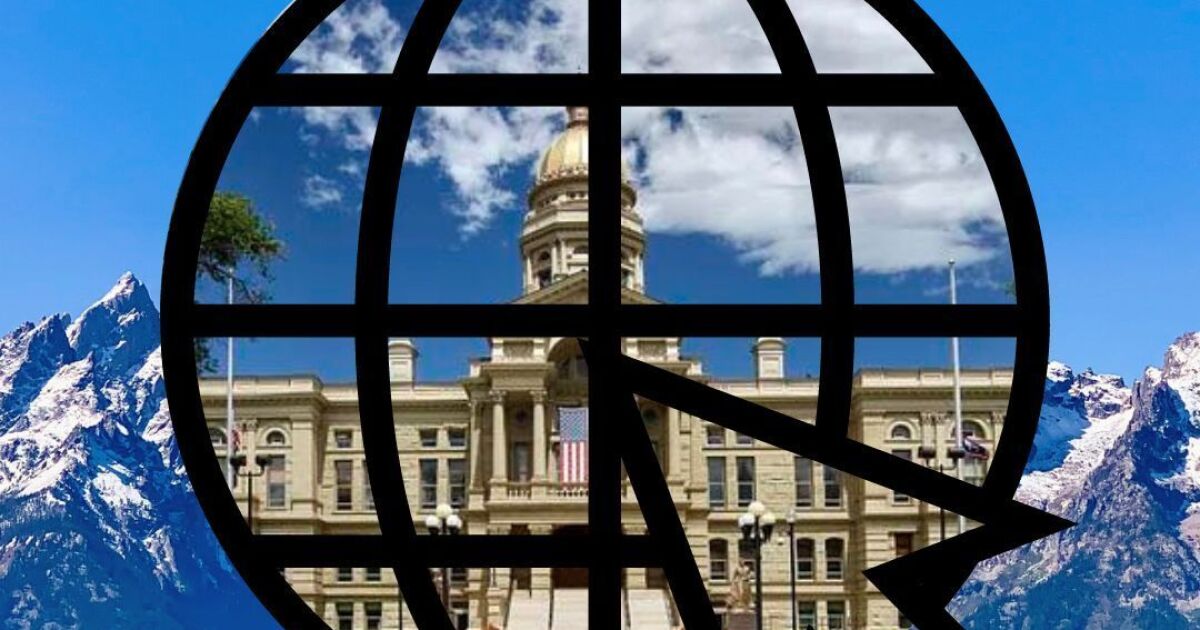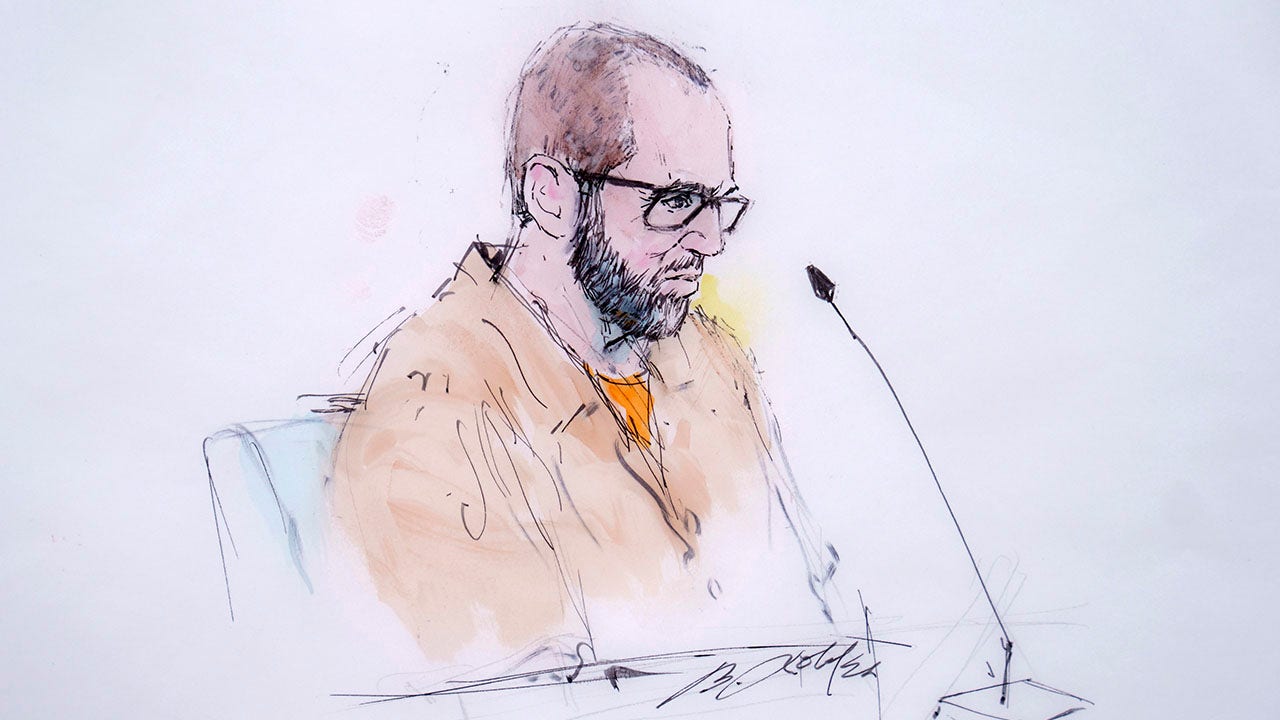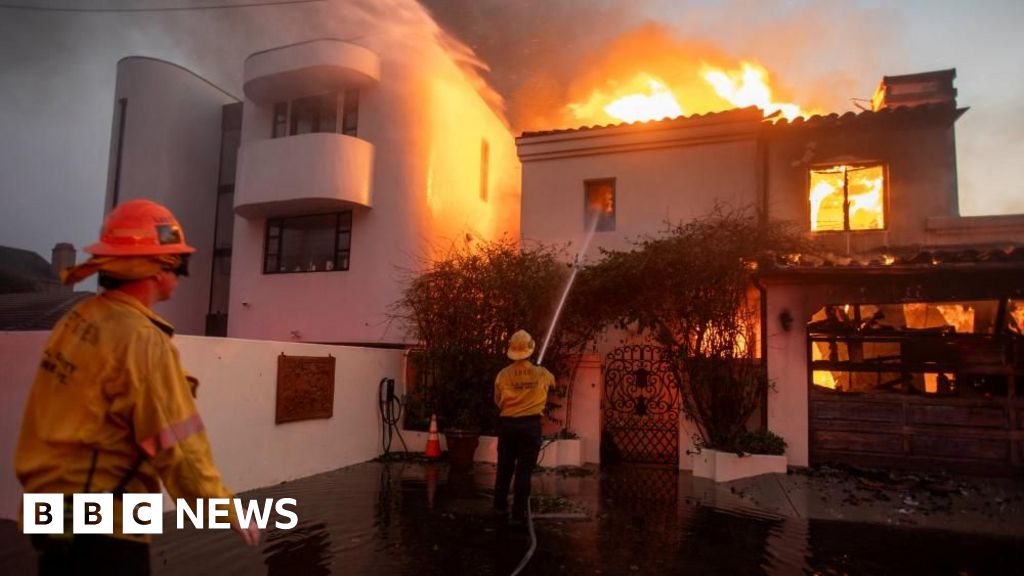Wyoming
Wyoming awarded largest investment in broadband internet infrastructure to date

A White House initiative to provide internet access to all Americans has cleared Wyoming for the largest federal investment in broadband yet.
The Biden-Harris administration has been working with states to create proposals and map data for a massive broadband build out. Wyoming was approved to receive over $347 million in grant money to work toward “internet for all” in the state. The approval means the state can now request access to the funds and get started making its proposed statewide broadband service a reality.
“That is $347 million to help connect over 39,000 homes and businesses in the state,” said Courtney Dozier with the National Telecommunications and Information Administration (NTIA).
The goal is to create a network of connectivity across the state that ensures Federal Communications -Commission (FCC) regulatory broadband speeds. That means at least 100 megabits per second for downloads and 20 megabits per second for uploads.
Dozier expects Wyoming will have “shovels in the ground” by 2025.
Where’s all the construction?
The Biden administration had received criticism that the “internet for all” initiative, or the Broadband Equity, Access, and Deployment (BEAD) Program funded by the Bipartisan Infrastructure Act, hadn’t connected any homes since its announcement in 2021.
Republicans and Trump’s appointee to the FCC, Brandon Carr, have pointed to bureaucracy and mandates within the BEAD program that place regulatory pressure on private companies and slow the build-out. However, the NTIA says it’s a massive project and a lot of money to hand out with proper preparation.
“With this historic level of investment. $42 billion from Congress and the Biden-Harris administration that we’re not likely to get again. We need to come up with a plan to connect everyone,” said Dozier.
Wyoming, like other states, had to plan and complete a detailed map of where internet connection exists, and where it does not. A map of underserved (slow internet speeds) and unserved (very slow speeds or no connection) areas was necessary.
“We have been working really closely with states and territories to receive their proposals that they submitted on what they’re going to do to accomplish this goal,” said Dozier. “How are they going to spend this money and make sure that at the end of the day, everyone in Wyoming that’s currently un- and underserved … has that access at the end of this program.”
Wyoming last year was pre-approved for the funds so the state could incorporate federal investments in the planning stage. Now that Wyoming’s plan is finalized, $347,877,921.27 in funding can begin to be put into action.
$300 million alone won’t be enough
While this is the largest federal investment made in Wyoming for the purpose of broadband connectivity, it’s by no means the only. In a state as vast as Wyoming, full connection is an expensive endeavor.
In 2018, the Wyoming state government set aside some $10 million for the Wyoming Broadband Advisory Council (part of the Broadband office), funds that would help start a mapping project for the state and promote broadband expansion.
In 2019, the U.S. Department of Agriculture began the ReConnect Loan and Grant Program, which allowed state governments, cooperatives and corporations to apply for development of broadband services in rural areas that might otherwise be too expensive for market-incentivized building to occur. Wyoming saw funding from that program in 2020 and 2022
The U.S. Department of the Treasury has given Wyoming over $70 million in competitive grant funding from the Capital Projects Fund for last mile broadband connection. This program awarded five companies $70 million for development in the past. Visionary Broadband was recently awarded another allocation of these funds by the Wyoming Business Council Broadband Office for the additional fiber project in Cheyenne.
Despite all these investments, the act of completed, working, high-speed connections will take time. Dozier said the administration and the federal government is ready to keep working on this project well into the future.
“This is a huge priority for you and so we’re going to continue to dedicate the kind of time and resources to land the program over the next five to six years.” said Dozier.
Fiber in my backyard?
In previous interviews with WPR, former head of the Wyoming Broadband Office, Elaine Zemple, said, “I don’t think we will reach 100 percent. But it’ll be in the high 90 percent,” in response to the federal goal of “internet for all.”
This was for two reasons. One being the difficult, vast and undeveloped terrain of Wyoming. And two, the privacy wishes of those who want to disconnect as much as possible.
The NTIA appears understanding of some Wyomingites’ desire to unplug – or choosing to not receive access in the first place – so long as the reasoning is there.
“If you’ve built a hunting lodge in the middle of [Wyoming], in the middle of nowhere, because you want to disconnect, we’re not going to force you to get internet service,” said Dozier.
However, she said an objection of some kind would have to be made.
“[Maybe] a broadband serviceable location that does not want it. Maybe they have religious objections. Maybe there’s other objections. Because don’t forget, too, that the person living in that home might not always be living in that home.”
The Biden administration would like to see fiber laid out as much as possible, alongside other broadband components made here in the United States,although some of those restrictions were recently lifted. The fiber focus did not come without criticism, including in Wyoming, but the administration appears open to working with states to use alternative technologies.
“Based on that calculation and the priorities for the program, it is a kind of fiber preference,” said Dozier. “We are working with Wyoming and every state and territory to support them pushing out the most reliable technologies as far as they can, while ensuring that everyone is getting access to high speed, affordable, reliable Internet, which may take on various different forms.”
Some of those technologies are hybrid networks or fixed-wireless connections that can be used to more cost-effectively get high speed service around mountains and out to rural, small communities.
Public involvement
Dozier stressed that the public should be involved in this process. Part of Wyoming’s map-making process included talking with nonprofits, local governments and internet service providers about where the internet can or should be built.
But that doesn’t cover everyone, according to Dozier. She says the public still needs to voice their concerns, as they have been offered to do so in the past.
“[Continue] to engage with your state broadband office, with your local governments, is going to be key to the success of the program,” she said.

Wyoming
Arizona adds former Wyoming freshman All-American DE Braden Siders

Arizona added its third transfer in two days with a commitment from Wyoming edge rusher Braden Siders on Wednesday. Siders was named a freshman All-American by The College Football News in 2022. An injury limited Siders to eight games during the 2024 season.
Siders had 91 tackles, 23.5 tackles for loss, 14 sacks and three passes defended in the last three seasons after not playing any snaps during his first two years with Wyoming. The 2022 season when he earned recognition on the freshman All-American team was the best season for Siders.
Siders had 44 tackles, 13.5 tackles for loss, 7.0 sacks and one pass defended as Wyoming finished 7-6 and won the Arizona bowl in 2022. In the past two seasons combined, Siders had 47 tackles, 10.0 TFLs, 7.0 sacks and 2.0 passes defended. Arizona has three transfer edge rushers added to the 2025 roster.
Before Siders, Arizona added FCS transfer edge rushers Chancellor Owens from Northwestern State and Riley Wilson. Siders provides Arizona with an experienced edge rusher in a high-level Group of Five program. Siders had proven the ability to produce at a high level if he stays healthy.
— Braden (@BradenSiderss) January 9, 2025
Siders is the740th transfer and 64 edge rusher in the portal per the On3 rankings. The On3 Industry Rankings listed Siders as the 2,543rd prospect, 276th linebacker and 18th player in Colorado in the 2020 class out of Arvada, Ralston Valley.
Arizona has the 29th-ranked transfer class per the 247Sports Composite. Siders is not included in the updated 247Sports transfer portal rankings. Arizona is far from finished adding transfers. Expect several players from the College Football Semifinal losers on Thursday and Friday to enter the transfer portal over the next week.
Arizona head coach Brent Brennan faces a pivotal 2025 season. Brennan and his staff have to get the majority of the players right. Siders is a gamble based on his injury history and his production declining over the past two seasons. If Siders can return to his 2022 production, he will be one of the best 2025 transfers.
Wyoming
Wyoming Legislature to Convene 2025 General Session Tuesday

The 68th Wyoming Legislature will convene for the 2025 General Session on Tuesday at Noon. The bodies will hold opening ceremonies as their first order of business, and newly elected members of the Legislature and legislative leadership will be sworn in. Following a brief recess, the bodies will begin introduction and referral of bills Tuesday afternoon. All floor proceedings and committee meetings during the 2025 General Session will be broadcast live via the Legislature’s YouTube channel.
The Legislature will then convene in a joint session of the Wyoming Senate and House of Representatives on Wednesday at 10 am, during the second day of legislative proceedings. At that time, Gov. Mark Gordon will deliver his State of the State message, followed by the State of the Judiciary message, delivered by Wyoming Supreme Court Chief Justice Kate M. Fox in the House Chamber at the Wyoming State Capitol.
Wyoming
230 Million-Year-Old Fossil From Wyoming Challenges Dinosaur Origin Theories

Though paleontologists have been discussing the origin and spread of dinosaurs for decades, the widely accepted theory was that they emerged in the southern part of the ancient continent of Pangea over 200 million years ago, and only spread northward millions of years later. A new study dramatically changes the conversation.
University of Wisconsin–Madison (UW–Madison) paleontologists announced the discovery of a new dinosaur that challenges the conventional theory about the dinosaurs’ origin and spread. The location and age of the newly-described fossils suggest that dinosaurs prowled the northern regions of Pangea millions of years earlier than previously hypothesized. The findings were detailed in a January 8 study published in the Zoological Journal of the Linnean Society.
“We’re kind of filling in some of this story, and we’re showing that the ideas that we’ve held for so long — ideas that were supported by the fragmented evidence that we had — weren’t quite right,” Dave Lovelace of the University of Wisconsin Geology Museum, who co-led the study, said in a UW–Madison statement. “We now have this piece of evidence that shows dinosaurs were here in the northern hemisphere much earlier than we thought.”
The paleontologists uncovered the theory-defying fossils in present-day Wyoming in 2013. Due to Earth’s shifting tectonic plates, this region was located near the equator over 200 million years ago on Laurasia, the northern half of Pangea (the southern half was called Gondwana). While the remains were fragmented, the paleontologists were able to attribute the fossils to a new dinosaur species they named Ahvaytum bahndooiveche, which was likely an early sauropod relative. Ahvaytum, however, looked very different from the iconic long-necked herbivores.
“It was basically the size of a chicken but with a really long tail,” said Lovelace. “We think of dinosaurs as these giant behemoths, but they didn’t start out that way.” The adult specimen was just over a foot tall (30.5 centimeters) and about three feet long (91.4 cm).
Perhaps most shockingly, however, is the age of the fossil. Lovelace and his colleagues used radioisotopic dating (a method for determining the age of materials by measuring radioactive decay) to determine that the rock layers where they’d found the Ahvaytum fossils—and thus roughly the remains themselves—were about 230 million years old. This makes Ahvaytum the oldest known Laurasian dinosaur, and about equivalent in age to the earliest known Gondwanan dinosaurs, according to the study. Dinosaurs first emerged during the Triassic period, around 230 million years ago. This era, which lasted from about 252 to 201 million years ago, saw the rise of the earliest dinos, before they became dominant in the Jurassic period.
“We have, with these fossils, the oldest equatorial dinosaur in the world — it’s also North America’s oldest dinosaur,” Lovelace added. The fact that the oldest known Laurasian dinosaur is about as old as the earliest known Gondwanan dinosaurs consequently challenges the theory that dinosaurs originated in the south of the ancient continent and only spread north millions of years later.
The site of the discovery is within the ancestral lands of the Eastern Shoshone Tribe. As a result, the researchers partnered with tribal members throughout their work, and included Eastern Shoshone elders and middle school students in choosing the new dinosaur’s name. Ahvaytum bahndooiveche roughly translates to “long ago dinosaur” in the Eastern Shoshone language.
The region also yielded additional finds. The team identified an early dinosaur-like footprint in older rock layers, meaning that dinosaurs or dinosaur-related creatures were calling Laurasia home even before Ahvaytum. The paleontologists also uncovered the fossil of a newly described amphibian, which was also named in the Eastern Shoshone language.
In challenging long-standing theories about how dinosaurs spread across Pangea, the discovery of the chicken-sized Ahvaytum ultimately paints a clearer picture of the creatures that walked the Earth—and where—millions of years before us.
-

 Business1 week ago
Business1 week agoThese are the top 7 issues facing the struggling restaurant industry in 2025
-

 Culture1 week ago
Culture1 week agoThe 25 worst losses in college football history, including Baylor’s 2024 entry at Colorado
-

 Sports1 week ago
Sports1 week agoThe top out-of-contract players available as free transfers: Kimmich, De Bruyne, Van Dijk…
-

 Politics7 days ago
Politics7 days agoNew Orleans attacker had 'remote detonator' for explosives in French Quarter, Biden says
-

 Politics6 days ago
Politics6 days agoCarter's judicial picks reshaped the federal bench across the country
-

 Politics5 days ago
Politics5 days agoWho Are the Recipients of the Presidential Medal of Freedom?
-

 Health4 days ago
Health4 days agoOzempic ‘microdosing’ is the new weight-loss trend: Should you try it?
-

 World1 week ago
World1 week agoIvory Coast says French troops to leave country after decades












